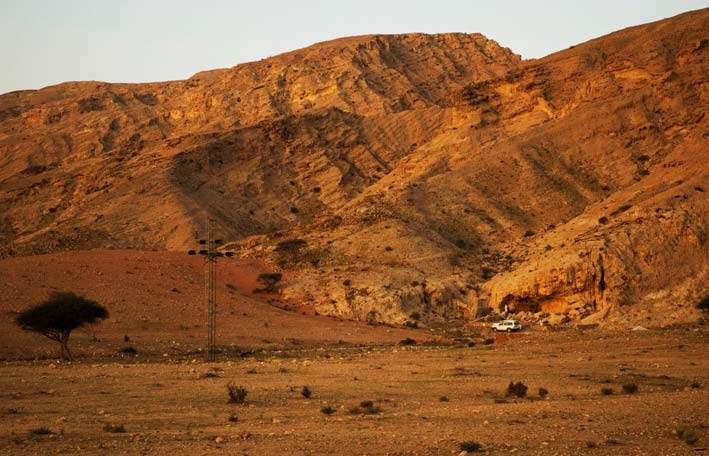LOS ANGELES – Tools unearthed near the Persian Gulf show that our ancestors may have migrated far out of Africa as early as 125,000 years ago — about 60,000 years earlier than was previously believed.
The finding, published online Thurday in the journal Science, also provides evidence that early humans took a different route during their migration than scientists had assumed: crossing eastward, directly into southern Arabia from East Africa, rather than following the Nile northward to the northwestern edge of Arabia.
It is the “first material evidence” that people ventured well out of Africa so long ago, during the Pleistocene, said study coauthor Anthony Marks, a professor emeritus of anthropology with Southern Methodist University who is based in Santa Fe, N.M.
Although evidence had earlier been found for humans in Israel dating to about 100,000 years ago, he said, those people did not appear to travel more than “three days’ walk” out of Africa, Marks said, and probably did not venture farther.
The newly discovered tools, by contrast, were found on the eastern coast of Arabia just miles from the northwestern tip of the Indian Ocean — indicating that humans traveled across the Arabian peninsula.
Anatomically modern humans — humans who looked like they do today — evolved in Africa sometime around 200,000 years ago, but didn’t leave that continent until much later, research suggests.
In the new paper, an international team of researchers reported they had found artifacts — hand axes, leaf-shaped blades and other stone tools — excavated from a rock shelter on the northeast end of Jebel Faya, a 6-mile-long limestone mountain in the United Arab Emirates.
They dated the artifacts pulled from the lowest, and thus the oldest, of three layers of dirt to about 125,000 years old.
This layer contained tools that were made in very different ways from those found in Israel or in North Africa along the route humans were thought to have originally taken out of Africa. In fact, the stone tools were more primitive and looked much more like the tools typical of people living in east and northeast Africa around that time.
The fact that the tools were found in the United Arab Emirates, about 34 miles from the Persian Gulf, implies that humans traveled directly into Arabia from Africa, said John Fleagle, a paleoanthropologist at Stony Brook University in Stony Brook, N.Y., who was not involved in the study. “The exciting thing is that it’s a silver dollar’s throw from India,” Fleagle added, implying that humans could have made their way into the Indian subcontinent via this route, and then spread to Europe, Asia and Australia.
The researchers examined what the ancient climate must have been around 130,000 years ago, and found that water levels were much lower. This meant that the Bab al-Mandab Strait, a strip of water separating the horn of Africa from the heel of the Arabian boot, could have been clear for passage at low tide. Rather than being hot, dry and deadly, prehistoric Arabia was a land of lakes and rivers, filled with gazelles, antelope and other grassland animals, allowing safe passage across the peninsula.
“The East African baboon is found in Yemen. … It got across,” Marks said. “If a baboon can get across, people can get across.”
Marks added that archaeologists would have to uncover more artifacts from different sites to support the findings. “You have to have more than one example. What we need now are people to go out and survey sites across southern Arabia,” he said.
Fleagle said that relatively little is known about human migration through Arabia, modern-day Iran and other countries in the Middle East.
“It would be nice if they found some bones” for definitive proof that human beings related to those in East Africa were responsible for making the tools, he said.
Send questions/comments to the editors.



Success. Please wait for the page to reload. If the page does not reload within 5 seconds, please refresh the page.
Enter your email and password to access comments.
Hi, to comment on stories you must . This profile is in addition to your subscription and website login.
Already have a commenting profile? .
Invalid username/password.
Please check your email to confirm and complete your registration.
Only subscribers are eligible to post comments. Please subscribe or login first for digital access. Here’s why.
Use the form below to reset your password. When you've submitted your account email, we will send an email with a reset code.